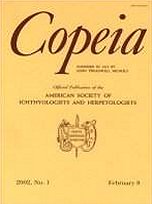Freeze tolerance and cryoprotectant synthesis was examined in Hyla regilla, collected from Northern California in the spring and fall. Specimens frozen at 2 C for six and 12 hours had a survival rate of 10% and 80%, respectively, in both seasons. This is the first report of freeze tolerance for H. regilla. Freezing caused a fivefold increase in plasma glucose levels in the spring and a 14-fold increase in the fall. Ice formation induced a rise in liver glucose and glycerol production in both seasons with concentrations of liver glucose being greater in the fall than in the spring. The increase in glucose was accompanied by a significant decline in liver glycogen. Seasonal differences in muscle glycogen levels in response to freezing were not shown, suggesting that the liver is the organ responsible for cryoprotectant synthesis. The rise in plasma glucose, along with increased levels of liver glucose and glycerol in response to freezing, suggests that these compounds are being used as cryoprotectants, with glucose being the primary component.
How to translate text using browser tools
1 August 2000
Freeze Tolerance and Cryoprotectant Synthesis of the Pacific Tree Frog Hyla regilla
Scott A. Croes,
Robert E. Thomas
ACCESS THE FULL ARTICLE





